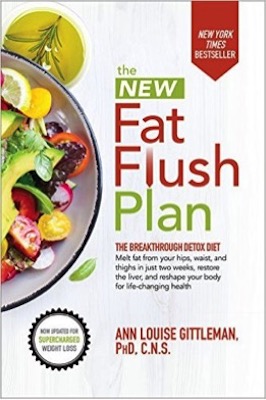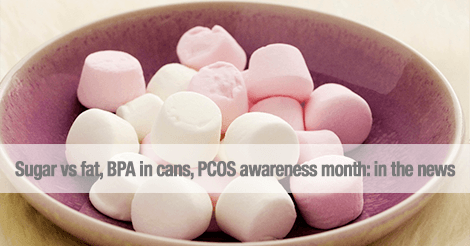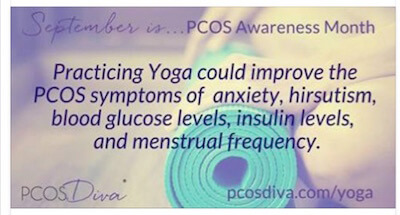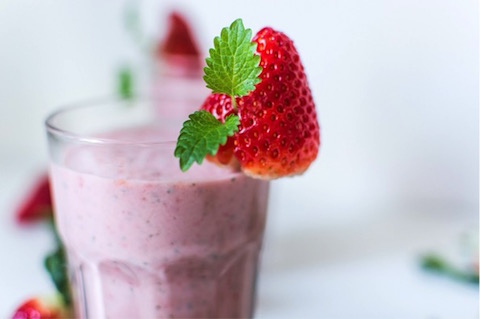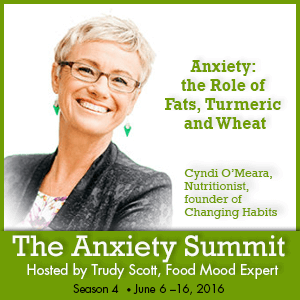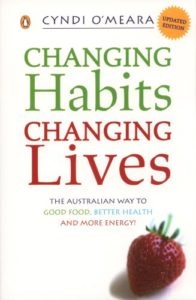A new book by Ann Louise Gittleman, Ph.D., C.N.S., The New Fat Flush Plan, has just released and already it’s a New York Times bestseller. The first edition of this book was an all-time favorite with me and my clients when I first started working as a nutritionist. I’m really pleased to see she has a new edition and I am loving the updates.
I especially enjoy the new sections that address the Top 10 Hidden Weight Gain Factors (the notes in parentheses after each hidden factor are mine):
Hidden Factor #1: Your Tired, Toxic Liver (she has always been an expert on this topic)
Hidden Factor #2: False Fat (this one is intriguing, isn’t it?)
Hidden Factor #3: Fear of Eating Fat (I’m constantly amazed this fear still exists)
Hidden Factor #4: Insulin Resistance and Inflammation (a big factor in so many diseases)
Hidden Factor #5: Stress as a Fat Maker (we know all about this one, don’t we?)
Hidden Factor #6: Messy Microbiome (we’re seeing so much new research on this topic)
Hidden Factor #7: Poor Quality Bile (we don’t hear much about bile so I’m going to share more on this topic – I shared some of it from the Medicinal Supplements Summit here)
Hidden Factor #8: Tuckered Out Thyroid (more and more people are experiencing thyroid issues)
Hidden Factor #9: Hidden Hitchhikers – Parasites (you heard her share her expertise on this topic in our Parasite-Anxiety interview on the Anxiety Summit)
Hidden Factor #10: Missing Magnesium (this one is also a big factor for anxiety)
As you can see much of the above applies to both weight-gain and anxiety. I’d like to share some of the excellent information on poor quality bile because it’s not something we hear much about. Because it’s tied to fluctuating blood sugar levels, toxins and fat digestion, it has a direct impact on anxiety.
If you’ve been taking or are currently taking prescription anxiety or depression medications (SSRIs or benzodiazepines) or other medications then there is also the need for more liver and gallbladder support.
Let’s start with the function of bile:
Made from lecithin, cholesterol and bilirubin, your bile has two jobs. First it emulsifies and digests fat, breaking it down into small particles so that your intestines can absorb them. Second, it helps escort toxins that your liver has removed out of the body.
Ann Louise shares how bile deficiency affects your overall health, prevents weight-loss and encourages weight gain:
You know that erratic blood sugar levels, haywire hunger hormones, a tired toxic liver, and poor detoxification prime the body to accumulate excess fat.
What she shares next is very interesting:
Each of these factors are rooted to some degree in low quality bile as well as other causes. As a matter of fact, bile has such an important role in weight regulation that improving bile quality has been shown to increase metabolism by 50 percent. If you thin the bile you thin the body. Period.
I really enjoy the signs and symptoms she shares in the book. Here are some of the signs and symptoms of low quality bile:
- Queasiness after a fatty meal (impaired bile flow)
- Light-colored or floating stools (lack of bile output)
- Nausea (not enough bile)
- Dry skin and hair (lack of essential fatty acids)
- Constipation (inadequate bile for lubrication)
- Constant feeling of fullness
- Inability to lose weight
- Pain under the right rib cage (reflective pain from the gallbladder)
- Hemorrhoids (congested liver)
- Varicose veins (pressure from constipation due to thickened bile)
- Pain between the shoulder blades (reflective pain from the gallbladder)
- Bloating or gas
- Headache over the eyes (gallbladder meridian passes over this region)
- Bitter taste in the mouth after meals (sign of bile regurgitation)
- History of prescription or recreational drug use (need for more liver and gallbladder support)
- Sensitivities to chemicals
- Easily intoxicated (need for more liver and gallbladder support)
- Fibromyalgia (sign of liver and gallbladder overload)
- Hypothyroidism (sign of deficient bile to stimulate active thyroid hormone in fat cells)
Here is a quick summary of the advice she offers to improve bile production:
- Elimination of food allergies
- Addressing low levels of hydrochloric acid or stomach acid
- Controlling stress
- Adding bitter greens to the diet
- Hot lemon water in the morning (a favorite of the original Fat Flash Plan)
- Adding non-GMO lecithin from soy and sunflowers to your morning smoothie
- Using castor oil packs
- Using a bile building formula that contains choline, taurine, beet root and pancreatic lipase
Here is the link to the New Fat Flush Plan on Amazon so you can check out the bile chapter in detail and read about all the other hidden factors and tools for weight-loss and overall health.
Get a copy for yourself as a gift or get a copy for a friend or sister or other family member. And let us know what you think? And how you do with improving your bile production?
I’m going to work on improving my bile production and I’ll keep you posted on my progress.
